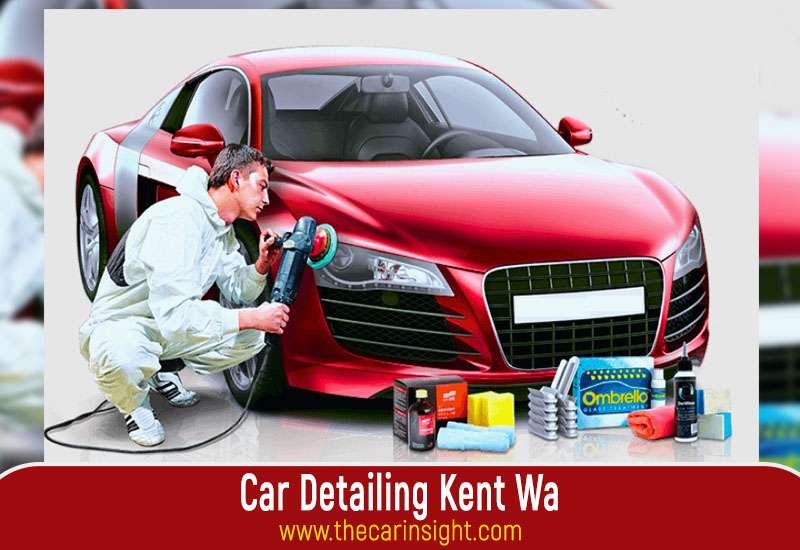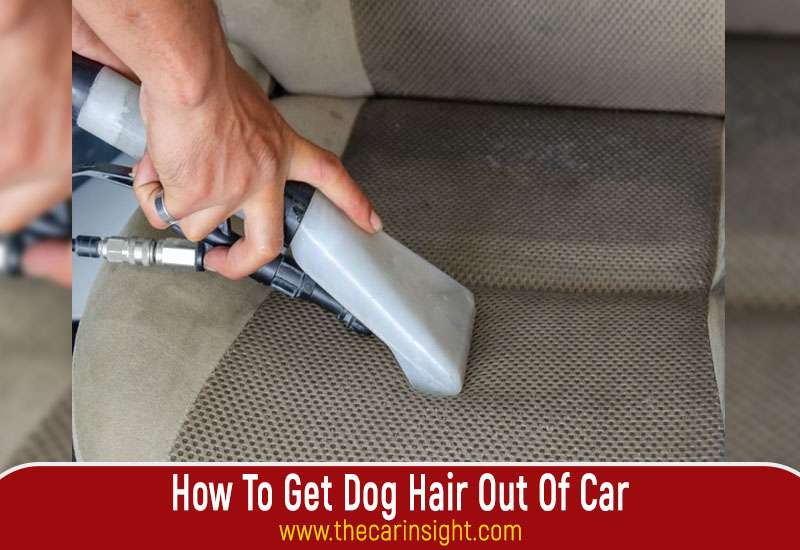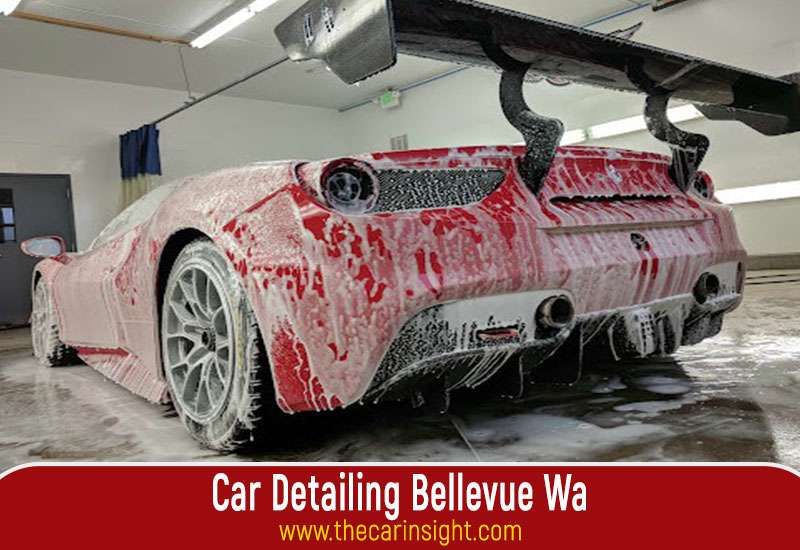Paint correction for cars involves the process of professionally removing imperfections on the vehicle’s paintwork, such as swirl marks, scratches, or oxidation, to restore its original glossy finish and enhance its overall appearance. Through meticulous polishing and buffing techniques, paint correction eliminates surface defects, giving the car a smooth and flawless look.
Proper paint correction requires skill, expertise, and the use of specialized equipment and products to achieve optimal results. It is a popular service among car enthusiasts and professionals in the automotive industry looking to restore the beauty and value of their vehicles.
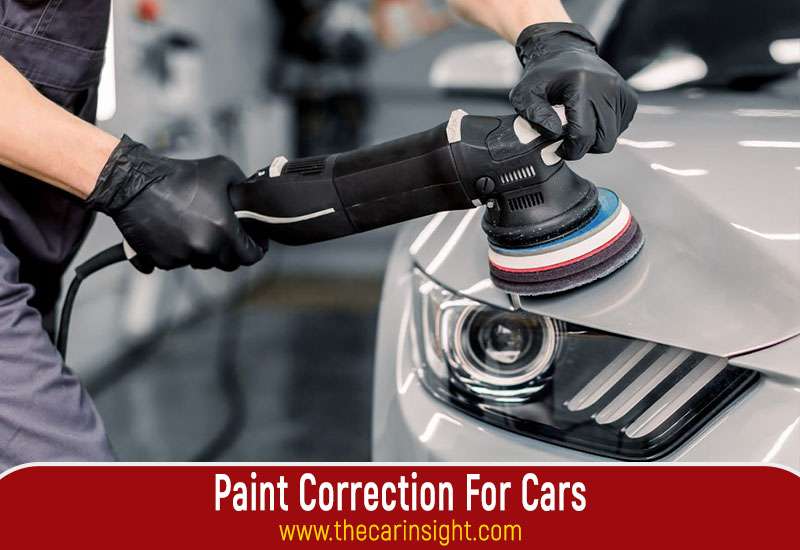
The Basics Of Paint Correction
Paint correction is a process that involves restoring and rejuvenating the paintwork of a car to its original condition. Over time, a car’s paint can become dull, scratched, or have swirl marks, diminishing its overall appearance. Paint correction helps to rectify these imperfections, resulting in a smoother, glossy finish.
What Is Paint Correction?
Paint correction is a professional technique used to remove defects and imperfections from a car’s paintwork. It is a meticulous process that involves polishing and refining the paint surface to eliminate any swirl marks, scratches, oxidation, water spots, and other blemishes. By using specialized tools, compounds, and techniques, professional detailers can restore the paint to its original luster, giving the car a showroom-like finish.
Signs Your Car Needs Paint Correction
If you’re wondering whether your car needs paint correction, here are some signs to look out for:
- Swirl Marks: These are fine circular scratches that can occur due to improper washing techniques or contact with abrasive materials.
- Scratches: Deep scratches or paint transfer from accidental collisions can mar the appearance of your car’s paint.
- Faded Color: Over time, exposure to sunlight and environmental pollutants can cause the color of your car’s paint to fade.
- Oxidation: Oxidation occurs when the clear coat on the paint surface breaks down, leading to a dull, chalky appearance.
- Water Spots: Leaving water to air dry on your car’s paint can result in unsightly water spots that can be difficult to remove.
If any of these signs are evident on your car’s paintwork, it may be time to consider getting a paint correction treatment to restore its original beauty.
Preparing For Paint Correction
Before diving into the paint correction process, it is crucial to adequately prepare the car’s surface. This ensures optimal results and minimizes any potential damage. Proper preparation involves two key steps: washing and decontaminating the surface and masking off areas that should not be treated.
Washing And Decontaminating The Surface
Start by thoroughly washing the car with a gentle shampoo and microfiber wash mitt to remove dirt and grime. This step eliminates surface contaminants that could interfere with the correction process. Next, clay barring the surface helps remove embedded contaminants for a smooth finish.
Masking Off Areas
Utilize painter’s tape to mask off sensitive areas such as rubber trim, glass, and plastics to prevent any accidental damage from the correction process. Properly masking off areas ensures that only the intended areas are treated, maintaining the integrity of the car’s various components.
Tools And Products Needed
To perform paint correction for cars, you will need a range of tools and products, including dual-action polisher, microfiber towels, polishing pads, compound, and polish. These essential items will help you achieve a smooth, glossy finish and rid your car of imperfections.
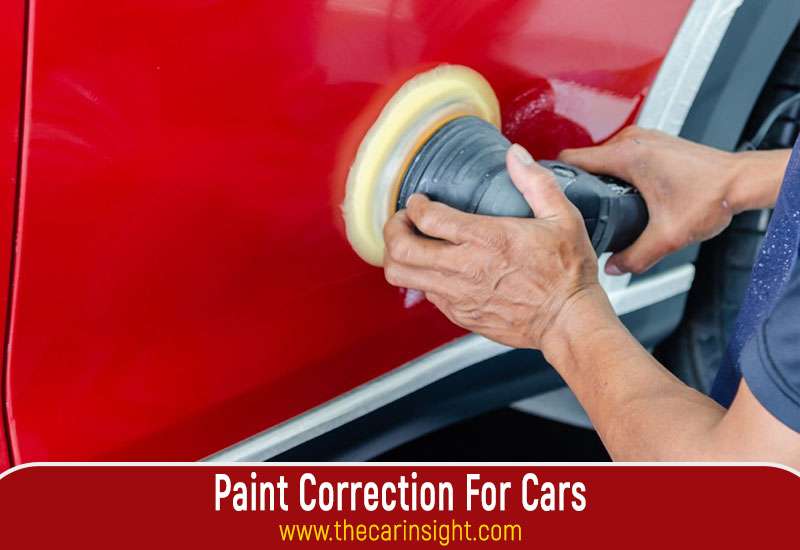
Polisher And Pads
Choose a polisher with dual action motion for efficiency.
Ensure pads are color-coded for different polishing stages.
- Polisher with dual action motion
- Color-coded pads for different stages
Compounds And Polishes
Select suitable compounds and polishes based on paint condition.
- Compounds to remove scratches
- Polishes for gloss enhancement
The Paint Correction Process
The Paint Correction Process is an essential step in restoring the shine and luster of your car’s paintwork. Over time, your car’s paint can become dull, scratched, or swirled, detracting from its overall appearance. Paint correction involves a meticulous process of removing imperfections, restoring the color depth, and enhancing the gloss of your car’s paint. In this article, we will delve into the different stages of the paint correction process, providing you with a comprehensive understanding of how this transformative process can give your car a showroom-worthy finish.
Test Spot
Before initiating the paint correction process on your entire vehicle, it is crucial to conduct a test spot. This involves selecting a small, inconspicuous area on the car’s paintwork to evaluate the type and extent of imperfections. By carefully analyzing the test spot, professional detailers can determine the most suitable paint correction technique and products to achieve optimal results. Conducting a test spot ensures that the correct approach is taken, minimizing the risk of causing further damage or compromising the integrity of the paint.
Sequential Polishing Stages
The paint correction process consists of multiple sequential polishing stages, each designed to gradually remove imperfections and restore the clarity of your car’s paint. These stages involve the use of various abrasive pads and polishing compounds, starting with the most aggressive and gradually refining the process. The sequential polishing stages ensure that every layer of imperfection is properly addressed, leaving behind a flawless, mirror-like finish.
| Polishing Stage | Abrasive Pad | Polishing Compound |
|---|---|---|
| 1st Stage | Heavy-Cut Pad | Heavy-Cut Compound |
| 2nd Stage | Medium-Cut Pad | Medium-Cut Compound |
| 3rd Stage | Fine-Cut Pad | Fine-Cut Compound |
| Final Stage | Foam Finishing Pad | Finishing Polish |
Each polishing stage gradually reduces the size of imperfections, such as scratches, swirl marks, and oxidation, while enhancing the clarity and reflection of the paint. This systematic approach ensures that the paint correction process is efficient and yields outstanding results. It is important to note that the sequential polishing stages should be performed by a trained professional who understands the intricacies of paintwork and can select the appropriate pads and compounds for your specific car’s needs.
By understanding the meticulous paint correction process, you can appreciate the level of expertise required to achieve that flawless, show-stopping finish. From the initial test spot to the sequential polishing stages, every step plays a crucial role in transforming your car’s appearance. Consider consulting a professional detailer to perform paint correction and unlock the true potential of your car’s paintwork.
Advanced Techniques For Flawless Shine
When it comes to achieving a flawless shine on your car’s paint, advanced techniques play a crucial role. These techniques are designed to eliminate imperfections and enhance the overall look of the vehicle. Car enthusiasts and professional detailers alike understand the significance of utilizing advanced paint correction methods to achieve a truly impeccable finish. In this article, we will delve into some advanced techniques for flawless shine, including jeweling and wet sanding.
Jeweling
Jeweling is a meticulous process that involves utilizing ultra-fine abrasives and polishes to eliminate the finest imperfections in the paint. This technique aims to create a mirror-like finish by meticulously refining the paint surface. Using specialized tools and compounds, jeweling can effectively remove swirl marks, fine scratches, and holograms, resulting in a lustrous and flawless shine.
Wet Sanding
Wet sanding is an advanced paint correction technique that involves carefully sanding the paint surface with ultra-fine sandpaper and a lubricating medium. This process is extremely precise and requires skill and expertise to ensure that imperfections are removed without compromising the integrity of the paint. Wet sanding can address deeper scratches, orange peel texture, and other surface irregularities, ultimately yielding a smooth and polished finish.
Dealing With Challenges
When it comes to paint correction for cars, various challenges may arise, but with the right techniques and tools, they can be effectively addressed. From swirl marks and holograms to removing deep scratches, tackling these issues requires patience, skill, and the use of quality products.
Swirl Marks And Holograms
Swirl marks and holograms are common imperfections that can detract from the appearance of a vehicle’s paint. Due to improper washing or polishing techniques, these circular or elliptical markings can become noticeable under certain lighting conditions. To rectify this, a multi-step polishing process using specific compounds and pads is essential. Additionally, utilizing a dual-action polisher with the correct speed and pressure is crucial for achieving a swirl-free, high-gloss finish.
Removing Deep Scratches
Deep scratches can be a significant challenge in the paint correction process. The use of a determined approach with progressively finer abrasive compounds and pads can gradually reduce the depth of the scratch until it eventually blends with the surrounding paint. For extremely deep scratches, spot sanding might be necessary, followed by a meticulous polishing procedure to achieve a seamless, blemish-free surface.
Protecting The Finish
When it comes to keeping your car looking its best, paint correction is an absolute must. Not only does it enhance the overall appearance of your vehicle, but it also protects the finish from the elements, ensuring that it stays in pristine condition for years to come. In this blog post, we will explore the importance of protecting the finish of your car and provide valuable tips on sealant or wax application as well as maintenance.
Sealant Or Wax Application
Applying a sealant or wax to your car is an essential step in protecting the finish. These products act as a barrier, shielding the paint from harmful UV rays, acid rain, bird droppings, and other contaminants. They also provide a glossy shine that makes your car stand out on the road. When it comes to choosing between a sealant and wax, it ultimately depends on your personal preferences and needs.
| Sealant | Wax |
|---|---|
| Long-lasting protection | Provides a warm, deep shine |
| Easy to apply and remove | Offers water beading properties |
| Protects against UV rays and oxidation | Can fill in minor imperfections |
Regardless of the option you choose, it is important to apply the product correctly. Start by thoroughly washing and drying your car. Use a foam applicator pad or a microfiber cloth to evenly distribute the sealant or wax onto the paint, working in small sections at a time. Allow the product to dry according to the manufacturer’s instructions and then buff it off using a clean microfiber cloth for a flawless finish.
Maintenance Tips
Once you have applied the sealant or wax, it is crucial to maintain the finish to ensure long-lasting protection and a striking appearance. Here are some maintenance tips to keep in mind:
- Regularly wash your car with a pH-neutral shampoo to remove dirt and contaminants.
- Use a microfiber cloth or soft sponge for washing, and avoid abrasive materials that can scratch the paint.
- Dry your car with a clean microfiber cloth or a drying towel after each wash to prevent water spots.
- Consider using a quick detailer spray between washes to maintain the shine.
- Park your car in a shaded area or use a car cover to protect it from direct sunlight and harsh weather conditions.
- Avoid parking under trees where sap, bird droppings, and other debris can damage the paint.
By following these maintenance tips and regularly protecting the finish of your car with a sealant or wax, you can enjoy a showroom-worthy appearance and ensure that your vehicle continues to impress for years to come.
Professional Help Vs. Diy
Paint correction is essential to maintain the appearance and value of your car. When faced with imperfections in your car’s paint, you have two options: seeking professional help or attempting a DIY approach.
Benefits Of Professional Paint Correction
- Expertise in handling advanced tools and techniques.
- High-quality products are used for durable results.
- A customized correction based on your car’s specific needs.
- Professional finish that enhances the overall appearance.
- Time-saving solution with efficient and effective processes.
Diy Paint Correction Tips
- Research and gather the necessary tools and products.
- Start with a small test area to assess the results.
- Work in sections to ensure thorough correction.
- Follow product instructions carefully for the best outcomes.
- Regular maintenance to preserve the corrected paint.
Frequently Asked Questions For Paint Correction For Cars
Is Paint Correction Good For Your Car?
Yes, paint correction is good for your car as it restores the paint’s clarity and depth, removes swirl marks and scratches, and enhances the overall appearance. It also provides long-term protection and preserves the car’s value.
How Much Should A Paint Correction Cost?
The cost of paint correction may vary but typically ranges from $300 to $600. Factors such as car size, paint condition, and detailing services can impact the total cost. It’s best to consult with a professional detailer for an accurate quote.
How Do You Correct Paint On A Car?
To correct paint on a car, follow these steps: 1. Clean the affected area thoroughly. 2. Sand down the damaged paint until smooth. 3. Apply primer to the sanded area. 4. Allow the primer to dry, then add matching paint layers.
5. Finish by applying a clear coat and polishing the surface for a seamless finish.
How Do I Know If My Car Needs Paint Correction?
Inspect your car for swirls, scratches, dullness, or fading paint. These issues indicate the need for paint correction.
What Is Paint Correction For Cars?
Paint correction is a process that removes swirl marks and scratches to enhance a car’s appearance.
How Does Paint Correction Benefit My Vehicle?
Paint correction improves paint clarity, depth, and gloss, making your car look newer and more appealing.
Can Paint Correction Fix Deep Scratches?
While paint correction can improve shallow scratches, deeper ones may require touch-up paint or repairs.
Conclusion
Car owners can greatly benefit from paint correction services as they restore the beauty and shine of their vehicles. With professional techniques and products used during the process, imperfections like swirl marks, scratches, and oxidation are eliminated, resulting in a flawless finish.
Maintaining a well-maintained and aesthetically pleasing car is not only satisfying but also enhances its resale value. By investing in paint correction, car owners can enjoy a refreshed look that will turn heads on the road. Give your car the makeover it deserves with paint correction services today!

